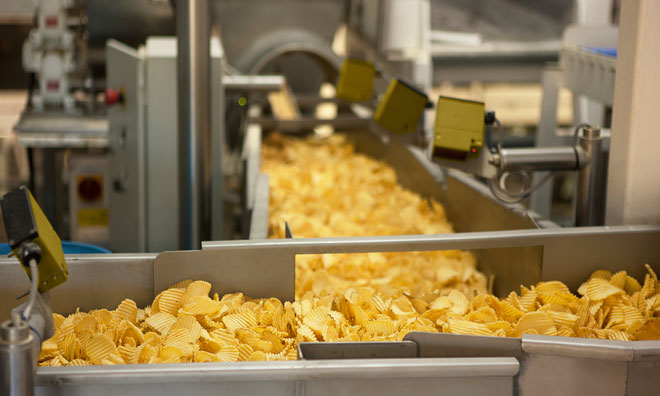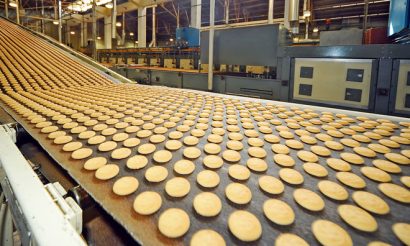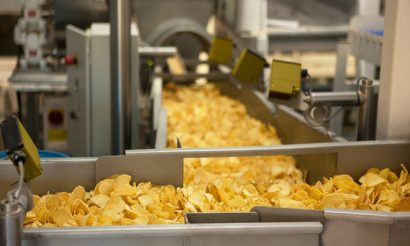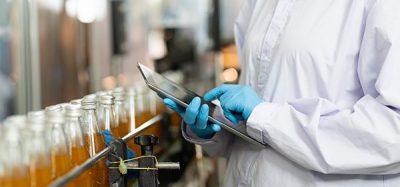Real time monitoring under harsh conditions
- Like
- Digg
- Del
- Tumblr
- VKontakte
- Buffer
- Love This
- Odnoklassniki
- Meneame
- Blogger
- Amazon
- Yahoo Mail
- Gmail
- AOL
- Newsvine
- HackerNews
- Evernote
- MySpace
- Mail.ru
- Viadeo
- Line
- Comments
- Yummly
- SMS
- Viber
- Telegram
- Subscribe
- Skype
- Facebook Messenger
- Kakao
- LiveJournal
- Yammer
- Edgar
- Fintel
- Mix
- Instapaper
- Copy Link
Posted: 3 November 2016 | Jeroen Knol, Director, EFFoST | No comments yet
EU funded researchers have developed a system to monitor industrial food processing in real-time under harsh conditions by three different sensors, demonstrating that the methods have commercial potential…


EU funded researchers have developed a system to monitor industrial food processing in real-time under harsh conditions by three different sensors. Results have shown that the methods have commercial potential.


One of the main challenges of food industry is to reduce manufacturing costs and food waste. Conventional strategies of quality assurance can be effective, but are expensive and not always flawless; batch failures and reworks are frequent. For these reasons, the quality of the food products should already be incorporated into process development and design and not by post-production quality testing. This requires tools and systems which enable continuous analysis and control of processes, including real-time sensing and analysis of both raw materials and in-process materials. This way, the product quality is controlled during processing and not determined after production.
“The food industry must move on from conventional end of the process to real-time product quality control.”
Massimo Castellari, IRTA, Spain
Multi Sensor Device
The EU-funded MUSE-Tech project addressed this challenge by integrating three novel sensing technologies into a Multi Sensor Device (MSD). The MSD is designed in such a way that it allows additional input from already installed sensors in production lines. Three MSD’s were tested at both pilot plant scale and at industrial level in three case studies: bread, fried potato chips and beer production.
Distributed Temperature Sensing
The first sensing technology, Distributed Temperature Sensing (DTS), allows real-time and accurate monitoring of complex temperature profiles in harsh environments. The DTS sensors proved to be robust for the harsh conditions in all three tested cases: during dough fermentation, the frying oil of the continuous deep fryers and inside the brew kettle during beer production.
Quasi Imaging Vis-NIR
The second technology, Quasi Imaging Vis-NIR (QIVN), provides information about sugar content in raw potatoes, oil quality during frying (contamination with for instance mineral oils), flour composition and wort characteristics. The sensor is designed to work at high speed and gather data simultaneously from different points of the process. Although the quality of the data needs more investigation, the QIVN provided satisfactory results at pilot plant and industrial level, especially in the case of the frying process.


Photoacoustic Sensor
The third sensor, Photoacoustic Sensor (PAS), has been positively tested for the bread process under pilot plant and industrial condition. PAS monitors CO2, ethanol and humidity in the dough prover simultaneously. For frying and brewing, promising results were also observed but further refinements need to be implemented at industrial level. The raw data from the sensors was processed in real-time using statistical software tools. It provided users with information that they use to control their food production processes.
Industrial potential
The MSD has showed strong potential to achieve more consistent levels of quality during processing. This will allow food producers to reduce manufacturing costs and food waste. Before it can be used, the MSD needs to be tailored to monitor and control specific food processes.






